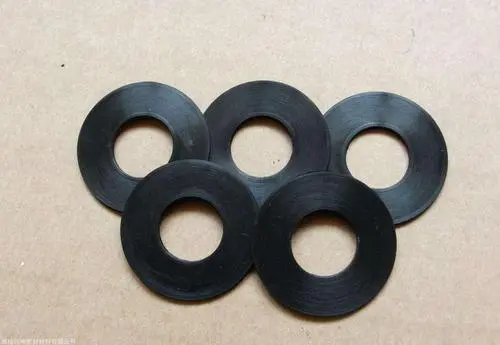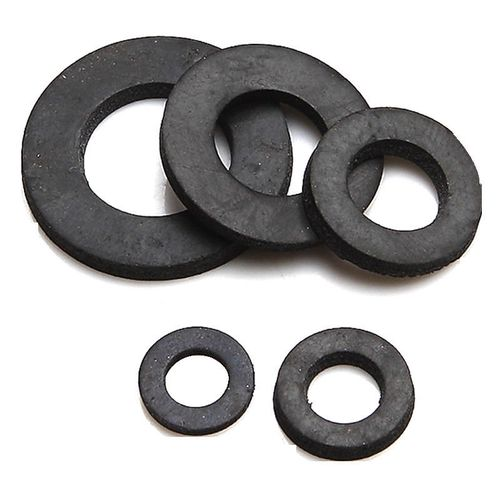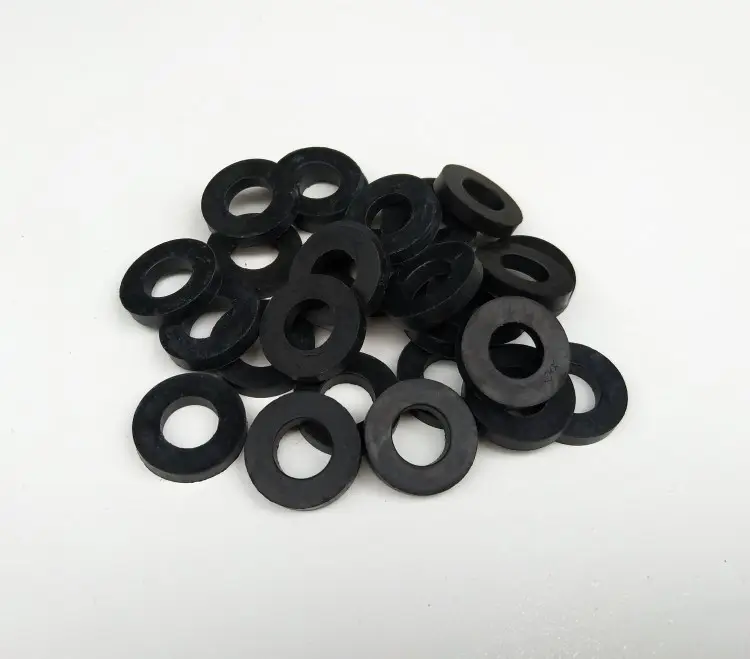Rubber Gaskets
Rubber gaskets are elastic components used for mechanically sealing the microscopic gap between two mating surfaces or joints. Examples of these surfaces are flange faces of piping and fittings, mating surfaces of an automotive cylinder head and engine block, tank rim and cover, door edges, frames, and so on. Rubber gaskets seal surfaces by flowing in and filling the surface irregularities of rigid parts. The sealing effect is created by the parts exerting compressive forces which plastically deform the gasket.
The sealing capability of rubbers is attributed to their elastomeric nature. Rubbers, natural or synthetic, belong to a family of materials called elastomers. Elastomers are classes of polymers that have a highly elastic nature created by cross-linking long polymer chains into amorphous structures. The intermolecular forces between the polymer chains are relatively weak; this allows them to be reconfigured upon application of stress. Because of this property, elastomeric gaskets can easily conform to the profile of the surfaces creating a tight seal.
Advantages of Rubber Gaskets
Rubber gaskets, compared to their metallic and other non-metallic counterparts, offer several benefits due to their unique set of properties. Elasticity, or the ability to be deformed, is the key attribute of rubber that allows it to form tight seals. Rubber gaskets are also easier to process and can be formulated from different raw materials. Below are some of the advantages of rubber gaskets.
Cheap and easy to manufacture:
Rubber gaskets are manufactured by combining raw rubber and additive materials and forming them into the desired profile. Like any other polymers, rubbers have excellent formability. In its liquid or uncured state, whether it be the thermosetting or thermoplastic type, rubber flows easily into molds and dies. Once hardened or cured, the material can be easily cut or machined to near-perfect dimensions. In contrast with metallic and other non-metallic gasket types, the production of rubber gaskets requires low heat and pressure. Thus, cheaper tooling is used, and lower operating costs are involved.
Excellent sealing properties:
Due to their unique microstructure, rubbers can be stretched or compressed without incurring damage or degradation of their properties. This allows rubber gaskets to form effective seals since they can easily deform according to the surface of the part they are sealing. They form a more effective seal than some metallic gaskets, which rely on grooved, serrated, or corrugated surfaces creating a labyrinth effect. Metallic gaskets also exhibit some degree of deformation, but the sealing is still metal-to-metal.
Different material types are available for every application:
Unlike other gasket types, there is a degree of flexibility and freedom in choosing the right material for a particular application. This is due to the nature of producing elastomeric materials. Raw elastomers such as raw synthetic rubbers can be produced from different hydrocarbon compounds. After producing this raw material, its properties are further modified by different additives such as stabilizers, fillers, antioxidants, and reinforcements. This design flexibility allows the production of countless engineered rubber gasket materials, most of which are patented by large manufacturers.
For comparison, metallic gaskets are typically limited to stainless steel, mineral gaskets are narrowed to mica and vermiculite, and graphite gaskets are restrained to highly pure, exfoliated graphite. The only gasket type with comparable range to rubber gaskets are compressed fiber gaskets; these also use elastomeric materials.



Cold Isostatic Pressing Bags CIP bags Polyurethane Products PU Products












